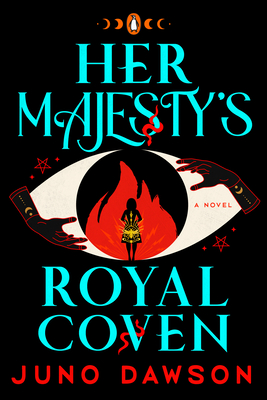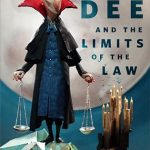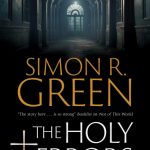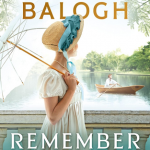 Her Majesty's Royal Coven (Her Majesty's Royal Coven, #1) by Juno Dawson
Her Majesty's Royal Coven (Her Majesty's Royal Coven, #1) by Juno Dawson Format: eARC
Source: supplied by publisher via Edelweiss
Formats available: hardcover, paperback, ebook, audiobook
Genres: fantasy, historical fantasy, paranormal
Series: HRMC #1
Pages: 448
Published by Penguin Books on May 31, 2022
Purchasing Info: Author's Website, Publisher's Website, Amazon, Barnes & Noble, Kobo, Bookshop.org, Better World Books
Goodreads
A Discovery of Witches meets The Craft in this the first installment of this epic fantasy trilogy about a group of childhood friends who are also witches.
If you look hard enough at old photographs, we're there in the background: healers in the trenches; Suffragettes; Bletchley Park oracles; land girls and resistance fighters. Why is it we help in times of crisis? We have a gift. We are stronger than Mundanes, plain and simple.At the dawn of their adolescence, on the eve of the summer solstice, four young girls--Helena, Leonie, Niamh and Elle--took the oath to join Her Majesty's Royal Coven, established by Queen Elizabeth I as a covert government department. Now, decades later, the witch community is still reeling from a civil war and Helena is now the reigning High Priestess of the organization. Yet Helena is the only one of her friend group still enmeshed in the stale bureaucracy of HMRC. Elle is trying to pretend she's a normal housewife, and Niamh has become a country vet, using her powers to heal sick animals. In what Helena perceives as the deepest betrayal, Leonie has defected to start her own more inclusive and intersectional coven, Diaspora. And now Helena has a bigger problem. A young warlock of extraordinary capabilities has been captured by authorities and seems to threaten the very existence of HMRC. With conflicting beliefs over the best course of action, the four friends must decide where their loyalties lie: with preserving tradition, or doing what is right.
Juno Dawson explores gender and the corrupting nature of power in a delightful and provocative story of magic and matriarchy, friendship and feminism. Dealing with all the aspects of contemporary womanhood, as well as being phenomenally powerful witches, Niamh, Helena, Leonie and Elle may have grown apart but they will always be bound by the sisterhood of the coven.
My Review:
Most prophecies are self-fulfilling. Oedipus’ father made that whole story happen by trying his damndest to keep that whole story from happening. And don’t get me started on Harry Potter and Voldemort and bringing that whole prophecy into being by trying to cut it off at the knees when Harry was a toddler.
Or maybe do get me started on that. Because I’ll be getting back to it later.
Because while the blurb for this book compares it to A Discovery of Witches and The Craft, Harry Potter is really a LOT closer to the mark. In the Potterverse, magic is real and it works and there’s an entire hidden society devoted to training new magic users and keeping the secret that there is power and influence to be had by literally waving a magic wand.
The girls in Her Majesty’s Royal Coven are inheritors of a long and grand tradition of using magic on behalf of the Crown of England in order to defend the realm from threats both foreign and domestic that use magic to make and be those threats.
They are, quite literally, the few and the proud, and the night before they make their official witch’s oaths and become part of HMRC, they are sure they will be friends forever.
That’s one prophecy that seldom works out, and so it proves when the story picks up 25 years later. Now they are all adults, and all survivors of a great magical war that scarred their bodies and their futures, freezing them into the places and positions they now hold – sometimes by their fingernails.
Helena, the leader of the girls they were and the leader of the hidebound covert government department that HMRC has been for generations, is facing the impending doom of the organization she heads. Or so she believes.
The witches who watch the future, the seeresses who prophesy on behalf of HMRC and of Britain, are all seeing the same dark future. That the end of their world is going to be brought about by a young warlock of immense power that the prophecies call “The Sullied Child”. He will be their downfall, and he has been found.
The prophecies are right. And they’re wrong. But mostly, they are completely, totally and utterly self-fulfilling to the nth degree and the entirely bitter end.
Escape Rating B-: There are so many things going on in this story, and so many of them are good. But there’s something rotten at its heart that I can’t get past, although I suspect that other readers will have less of a problem with it.
This is a story about feminism and female friendship. It’s also a story about how the ties that bind in childhood can strangle in adulthood.
The four women who are at the center of this story have all gone their different ways. Helena has taken the path of power and leadership that her considerable privilege has led her to believe is her right as well as her duty.
But the noblesse oblige that underlies that privilege has no room for any who would choose a different path – as all of her former friends have done. Helena’s HMRC has no place for intersectionality, so anyone not white, not British, not wealthy and not privileged, in other words anyone not like Helena herself, is a threat to her power.
Leonie is black, Elle has retreated into a mundane life, and Niamh has no desire to be under anyone’s thumb – and certainly not under Helena’s. They have all been, in their various ways, outcast from the HMRC.
When Niamh takes that so-called “Sullied Child” under her wing, she learns that the young warlock who is such a threat to the HMRC is actually a transgirl who wants nothing more than to be the witch she was meant to be and not the warlock that Helena continues to see as the ultimate threat.
Niamh, Elle and Leonie want to do what is right rather than what is easy. Helena wants to preserve the HMRC’s traditions and believes that those ends justify any means she might employ – no matter how heinous. Helena is certain that she is working for the “Greater Good” without ever taking a hard look at who it might be good for.
And prophecies are self-fulfilling.
But what struck me as I read Her Majesty’s Royal Coven was just how much it mirrored Harry Potter considered in context of that author’s heinous beliefs about transwomen. She used Hermione Granger as an avatar for herself in the series, to the point where she had Hermione marry Ron at the end because the author was working out issues in a romantic relationship of her own rather than taking that part of the story in the direction it had been heading from the beginning. (My 2 cents and I’ll get down off this soapbox now).
To me, Helena read like Hermione as her own author; smart, a bit stuck-up, worshipful of authority while determined to join it, and single-minded in pursuit of a goal. Also someone who seems to be doing her level best to destroy her own legacy because she can’t deal with the concept that other perspectives are as valid as her own and especially that transwomen are women. Full stop. For this reader, the obviousness of the woman behind the curtain, Helena as Hermione as her author, is the interpretation that remained fixed in my head through my entire reading and drenches my feelings about the book. I think it would have better served the story if the callback to Harry Potter’s author hadn’t been quite so obvious or so pointed.
Your reading mileage, even if by broomstick, may definitely vary.













